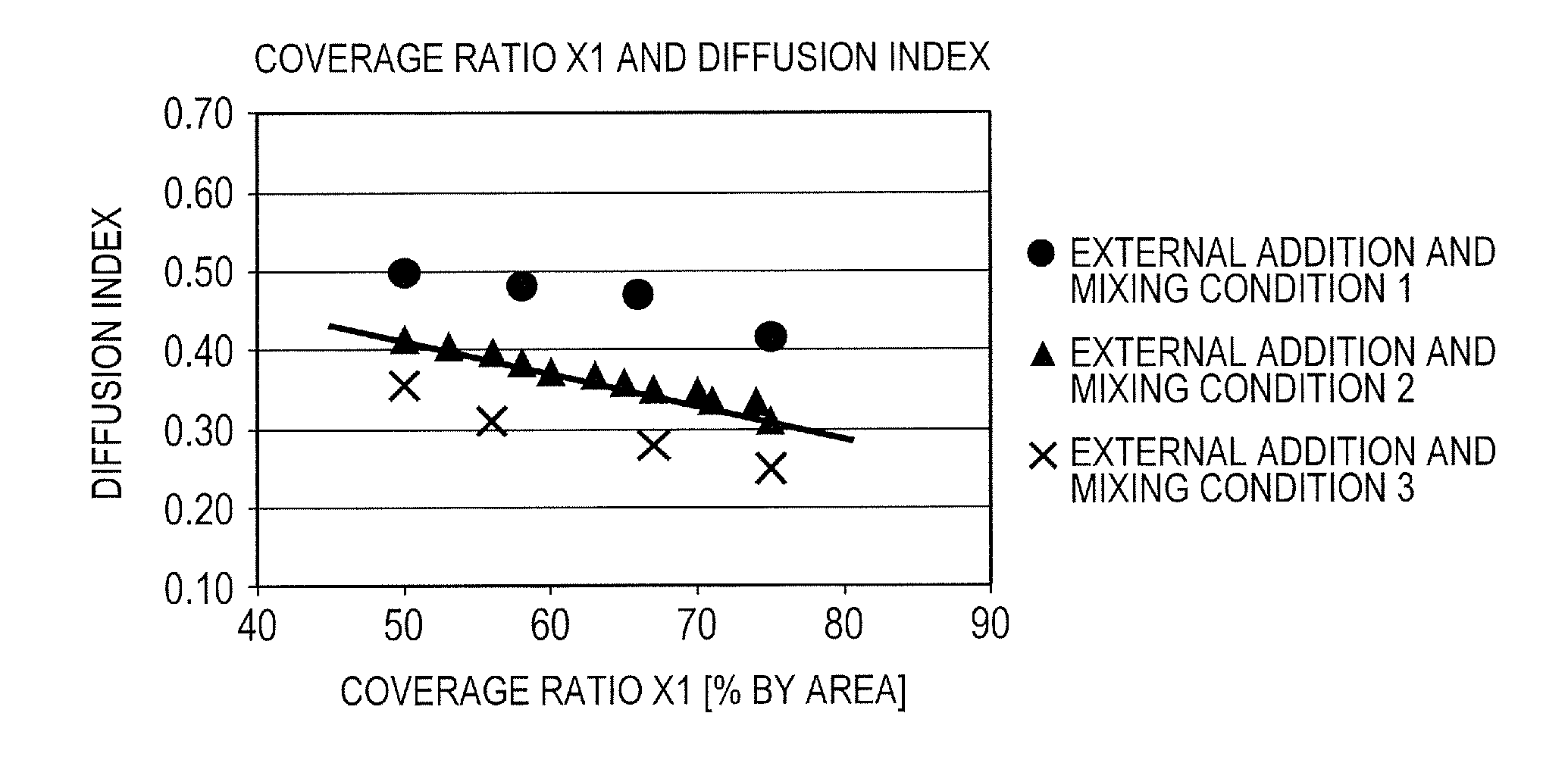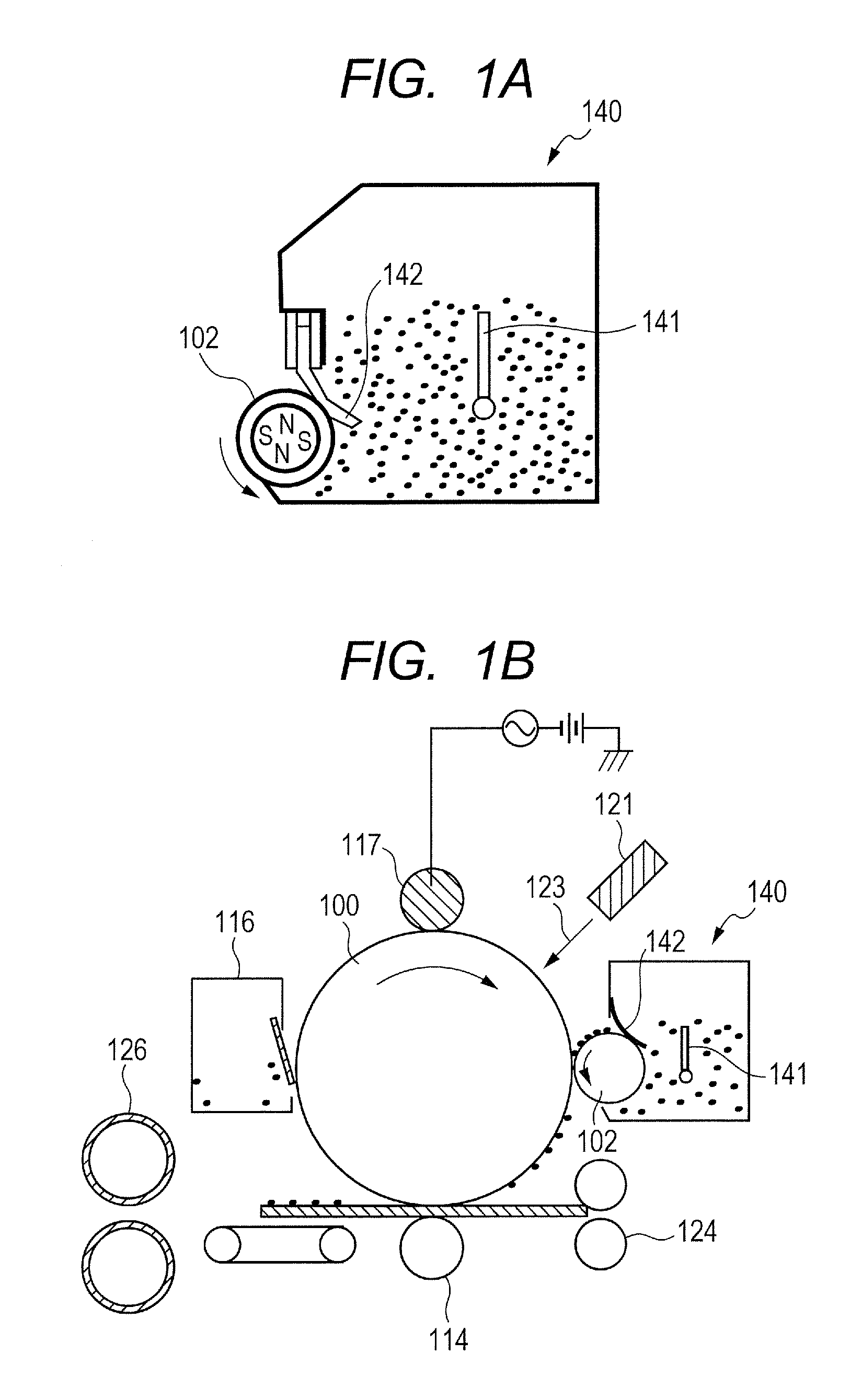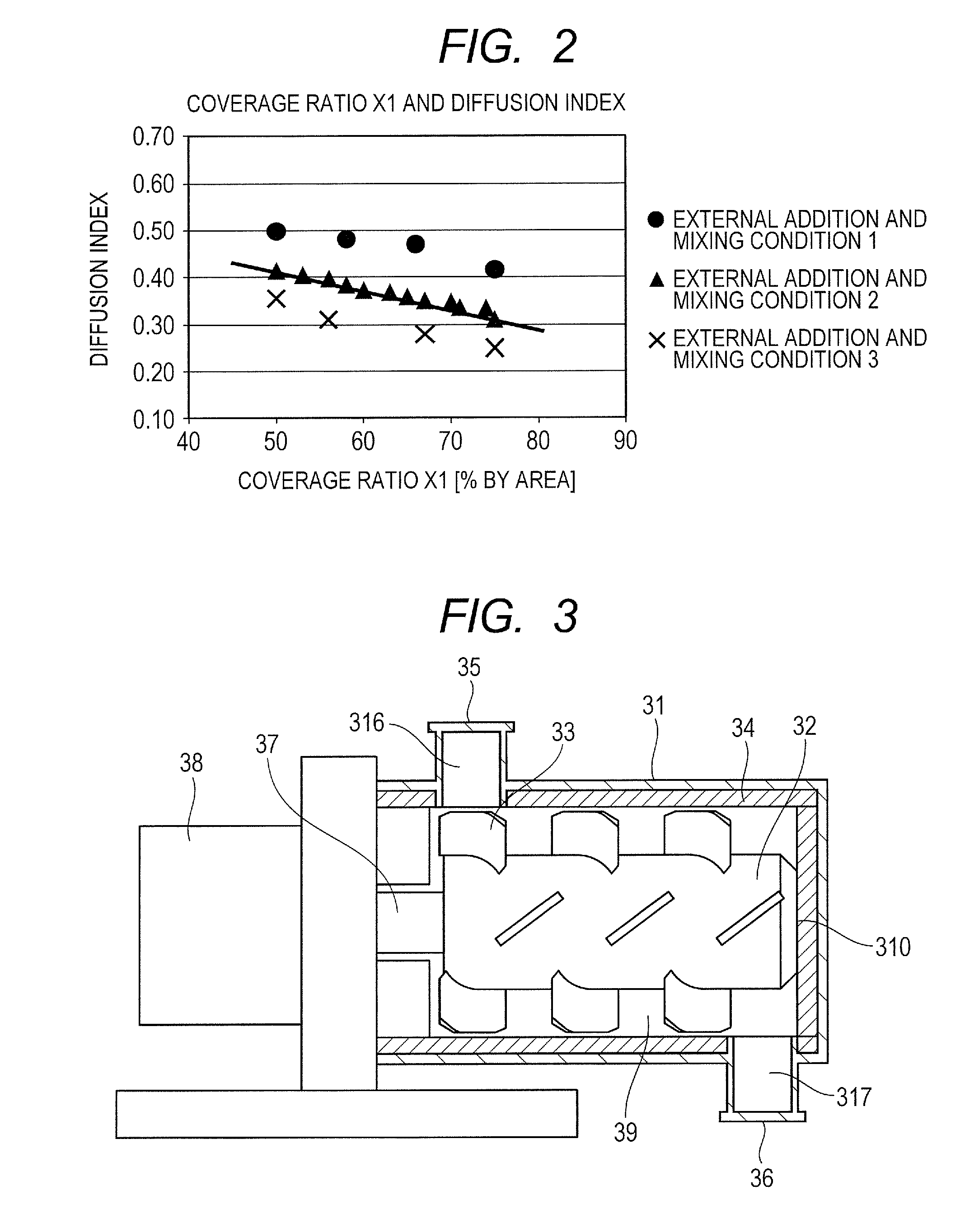Magnetic toner
a toner and magnetic field technology, applied in the field of magnetic toners, can solve the problems of ghosting, unstable image quality in long-term use, and differences in developmentability between, and achieve the effect of preventing ghosting and stable image density in long-term us
- Summary
- Abstract
- Description
- Claims
- Application Information
AI Technical Summary
Benefits of technology
Problems solved by technology
Method used
Image
Examples
production example 1
of Silica Fine Particles B
[0357]687.9 g of methanol, 42.0 g of pure water and 47.1 g of 28% by mass of ammonia water were placed and mixed in a 3 L glass reactor equipped with a stirrer, a dropping funnel and a thermometer. The temperature of the obtained solution was adjusted to 35° C., and the addition of 1100.0 g (7.23 mol) of tetramethoxysilane and 395.2 g of 5.4% by mass of ammonia water was simultaneously started with stirring. The tetramethoxysilane was added dropwise over 5 hours, while the ammonia water was added dropwise over 4 hours.
[0358]After the completion of the dropwise addition, the stirring was further continued for 0.2 hours for hydrolysis to obtain a methanol-water dispersion of hydrophilic spherical sol-gel silica fine particles. Subsequently, an ester adapter and a cooling tube were mounted to the glass reactor, and the dispersion was heated to 65° C. to distill off methanol. Then, pure water was added to the residue in the same amount as that of the distilled-...
production examples 2 to 5
of Silica Fine Particles B
[0360]Silica fine particles B2 to B5 were obtained in the same way as in the Production Example of the silica fine particles B1 except that the particle size of the untreated silica used was changed and the cracking treatment intensity was appropriately adjusted. The physical properties of the silica fine particles B2 to B5 are shown in Table 2.
[0361]
TABLE 2Number-average particleTruesize of primary particlesdensity[nm][g / cm3]Silica fine particles B11002.2Silica fine particles B21502.2Silica fine particles B3402.2Silica fine particles B42002.2Silica fine particles B5502.2Silica fine particles B6352.2Silica fine particles B72502.2
Production Example of Magnetic Toner 1
[0362]The magnetic toner particles were subjected to external addition and mixing treatment using the apparatus illustrated in FIG. 3.
[0363]The apparatus illustrated in FIG. 3 was configured such that: the diameter of the inner periphery of the main casing 31 was 130 mm; and the volume of the tr...
example 1
[0372]The magnetic toner 1 was used in evaluation described below. The evaluation results are shown in Table 5.
[0373](Image Forming Apparatus)
[0374]A printer LBP3100 manufactured by Canon Inc. was adapted to use in image output evaluation. Specifically, the printer was adapted such that the developer bearing member was in contact with the electrostatic latent image-bearing member as illustrated in FIGS. 1A and 1B. The contact pressure was adjusted such that the contact area between the developer bearing member and the electrostatic latent image-bearing member was 1.0 mm. This adaptation creates very strict evaluation conditions as to ghosts, because a toner-supplying member is absent; thus toner on the developer bearing member cannot be scraped off. Also, this adaptation creates strict evaluation conditions as to fogs on a drum after development of a black image, because the toner-supplying member is absent.
[0375]50 g of the magnetic toner 1 was charged into the developing apparatus...
PUM
| Property | Measurement | Unit |
|---|---|---|
| number-average particle size | aaaaa | aaaaa |
| number-average particle size | aaaaa | aaaaa |
| number-average particle size | aaaaa | aaaaa |
Abstract
Description
Claims
Application Information
 Login to View More
Login to View More - R&D
- Intellectual Property
- Life Sciences
- Materials
- Tech Scout
- Unparalleled Data Quality
- Higher Quality Content
- 60% Fewer Hallucinations
Browse by: Latest US Patents, China's latest patents, Technical Efficacy Thesaurus, Application Domain, Technology Topic, Popular Technical Reports.
© 2025 PatSnap. All rights reserved.Legal|Privacy policy|Modern Slavery Act Transparency Statement|Sitemap|About US| Contact US: help@patsnap.com



